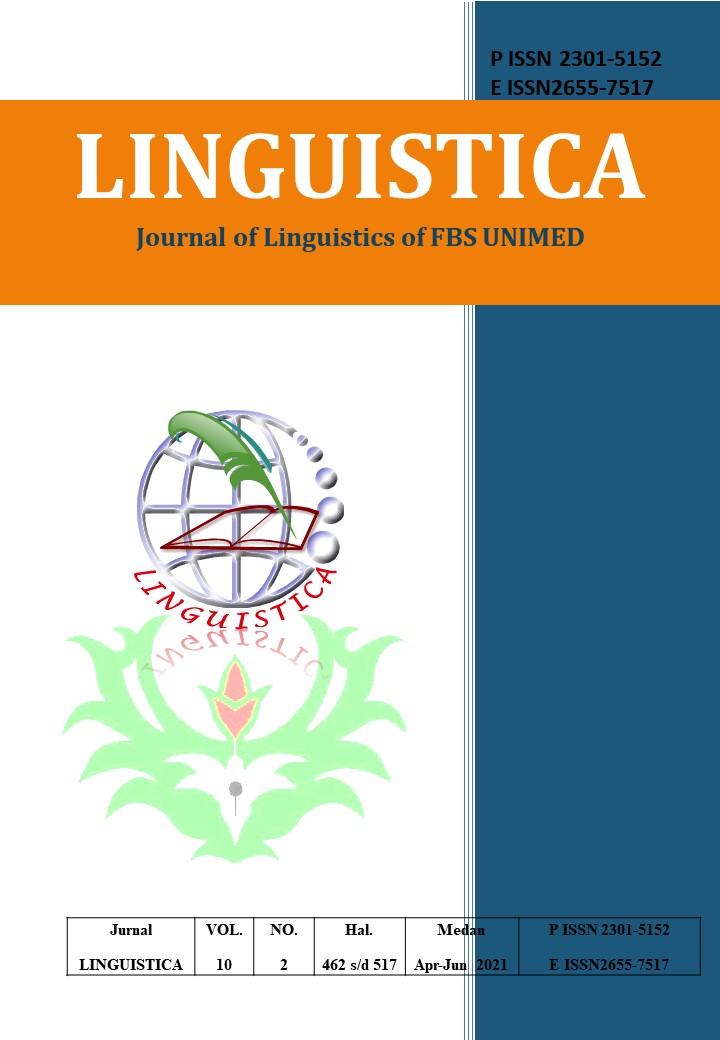LOGICO-SEMANTIC RELATIONS IN BATAK TOBA WEDDING CEREMONY
DOI:
https://doi.org/10.24114/jalu.v10i2.26534Abstract
The research focused on logico-semantic relations in the Batak Toba wedding ceremony. The research aimed to discover the types of logico-semantic relations used in mangulosi and describe how they were realized in the Batak Toba wedding ceremony. The research was conducted by using the descriptive qualitative method. The data were taken from 2 wedding ceremony videos from 104 clause complexes selected. The study's finding showed that there were 9 of the logico-semantic relations types used in the Batak Toba wedding ceremony. They were consecutively hypotactic enhancement, hypotactic elaboration, paratactic enhancement, paratactic elaboration, hypotactic locution, paratactic extension, hypotactic extension, hypotactic idea, and paratactic idea. The logico-semantic relations were realized in mangulosi in Batak Toba wedding ceremony consecutively conjunction, verb, preposition, prepositional phrase, and adverbial clause which the utterances aimed about the message, prediction in the future, advice, hope, and blessing of hulahula for the bridegroom.Downloads
Published
2021-07-17
Issue
Section
Articles
License
Copyright (c) 2021 TRIANA MANALU, MEISURI MEISURI, WIDYA ANDAYANI

This work is licensed under a Creative Commons Attribution-ShareAlike 4.0 International License.
Authors who publish with this journal agree to the following terms:
- Authors retain copyright and grant the journal the right of first publication with the work simultaneously licensed under a Creative Commons Attribution License that allows others to share the work with an acknowledgment of the work's authorship and initial publication in this journal.
- Authors are able to enter into separate, additional contractual arrangements for the non-exclusive distribution of the journal's published version of the work (e.g., post it to an institutional repository or publish it in a book), with an acknowledgment of its initial publication in this journal.
- Authors are permitted and encouraged to post their work online (e.g., in institutional repositories or on their website) prior to and during the submission process, as it can lead to productive exchanges, as well as earlier and greater citation of published work (See The Effect of Open Access).
- This work is licensed under a Creative Commons Attribution-ShareAlike 4.0 International License.

